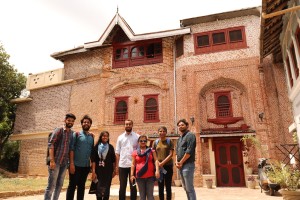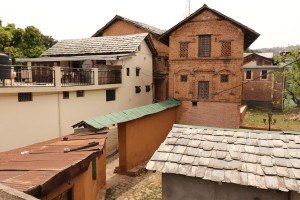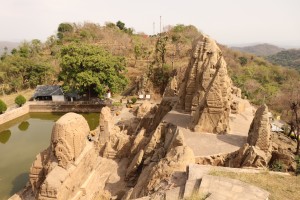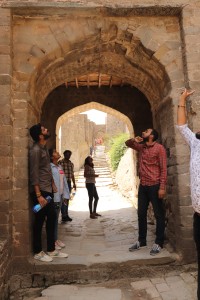Architectural Conservation Tour to Kangra-Masrur-Pragpur
Fourth year students having Arch. Conservation as their elective subject, recently went on a study tour to the city of Kangra in Himachal Pradesh along with Prof. Deepashree Choudhury
and Ar. Dishant Bhatia as teachers coordinators. The tour aimed at focusing on the practical implications of conservation projects and techniques in the country. The area selected for the two-day tour was Kangra and surrounding small villages and sites of architectural importance.
Day 01 – Pragpur – India’s First Heritage Village
The tour started with the visit to Pragpur in Himachal Pradesh. This small village was declared as India’s first Heritage village in 1997. The village is important in architectural sense because of the varied building construction styles it possesses. It is believed that the merchants who used to travel around the world got back to their village and tried to implement what they saw abroad. Thus, the village is a showcase of many different architectural styles. There is an important building, a 300 year old residence which has now been converted into a resort – The Judge’s Court. The students managed to visit the resort and the important old conserved building structures, where they identified the various clause/categories of a heritage conservation style.
Day 02 – Masrur Rockcut Group of Temples
The next stop for the students was the ancient monolithic rock-cut temples in Masroor. The temple group is an 8th century structure which showcases the North Indian Nagara style of temple architecture. The structures are mostly incomplete but have been conserved well and showcase various elements of heritage conservation in architecture. The students noticed around the various aspects of the practical application of conservation of such sites and also indulged themselves in live-sketching of various important elements which were kept there for display.
Day 03 – Kangra Fort
The next and last stop was the Kangra Fort, which was built by the local Kangra rajputs in Katoch Dynasty. It is the largest fort in Himalayas and probably the oldest in India. The fort consists of various levels and fortification techniques are on the display all around the complex. There are remains of an old temple complex inside the fort also. The walls and other few elements of the same have been conserved well for the observers. The students managed to have a small chat with the workers engaged in the continuous task of conserving such a huge site and learnt few basics of the trade. They also managed to conduct a small photographic documentation of all the places which can be further used for studies and better understanding of the subject.
   
|